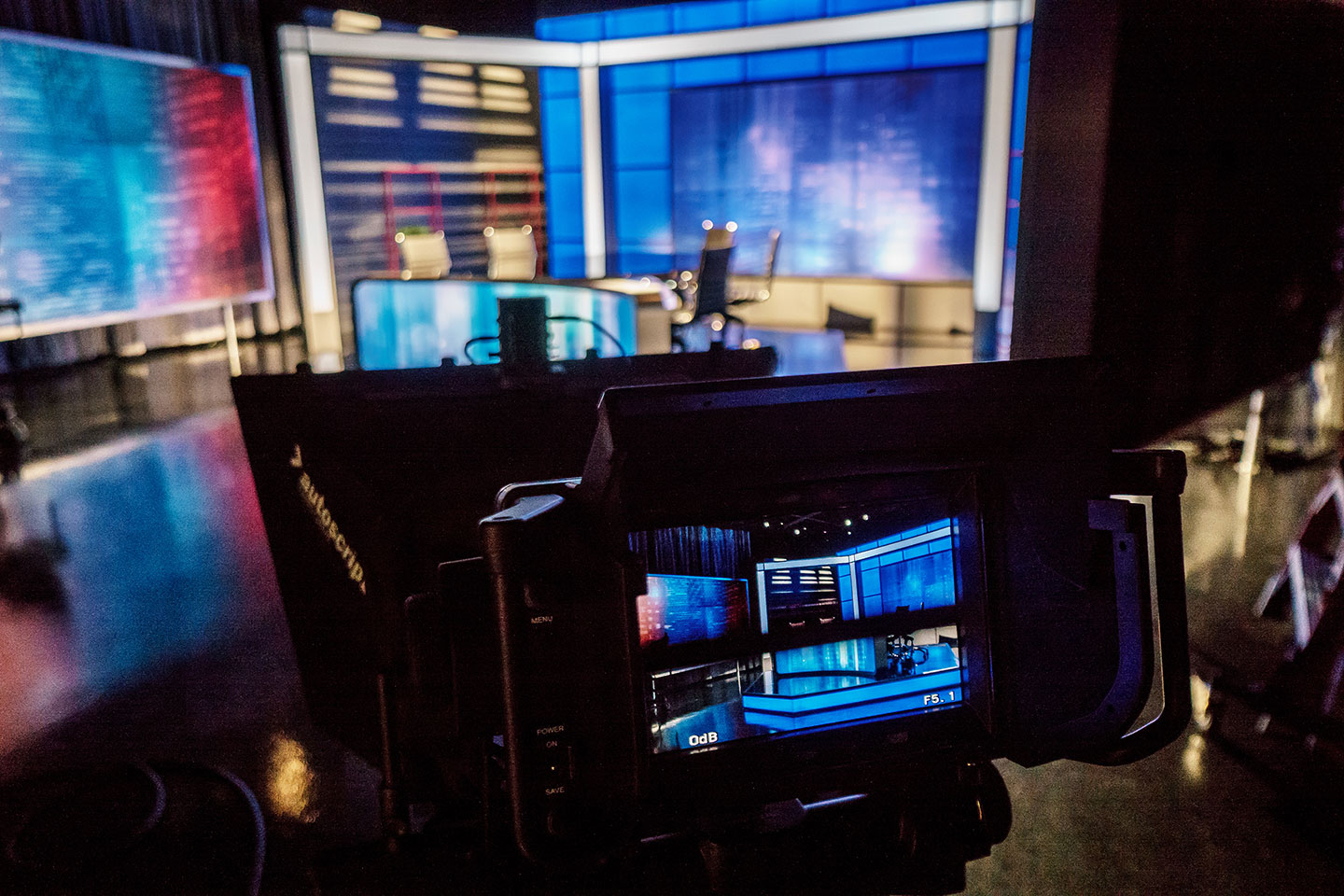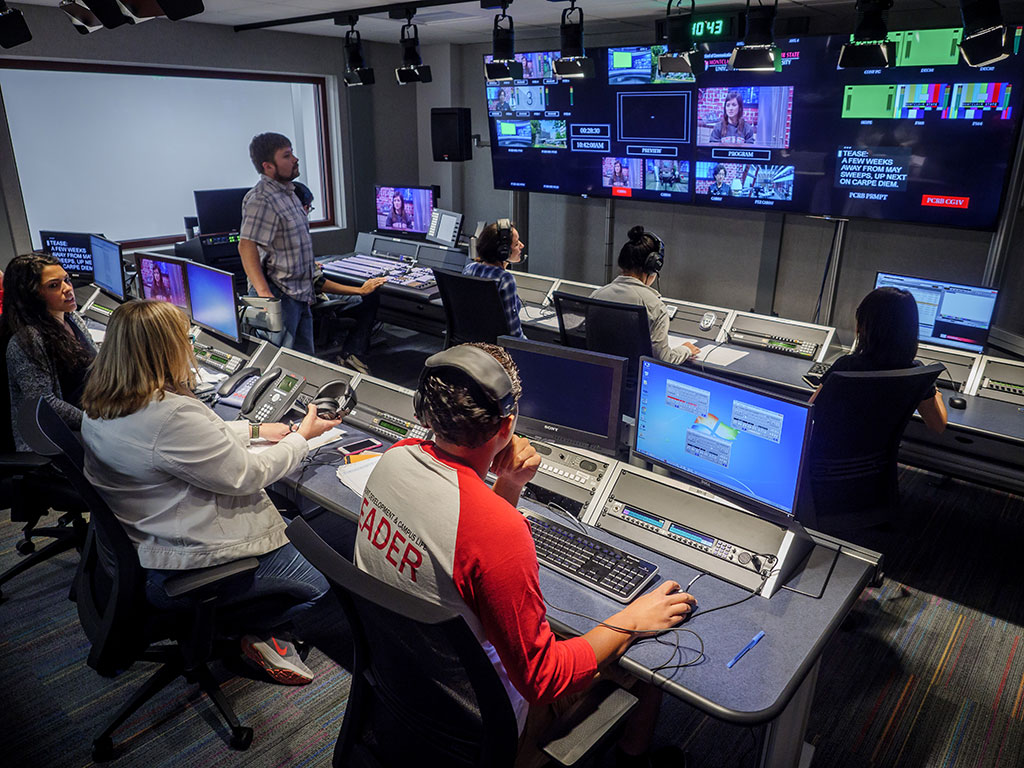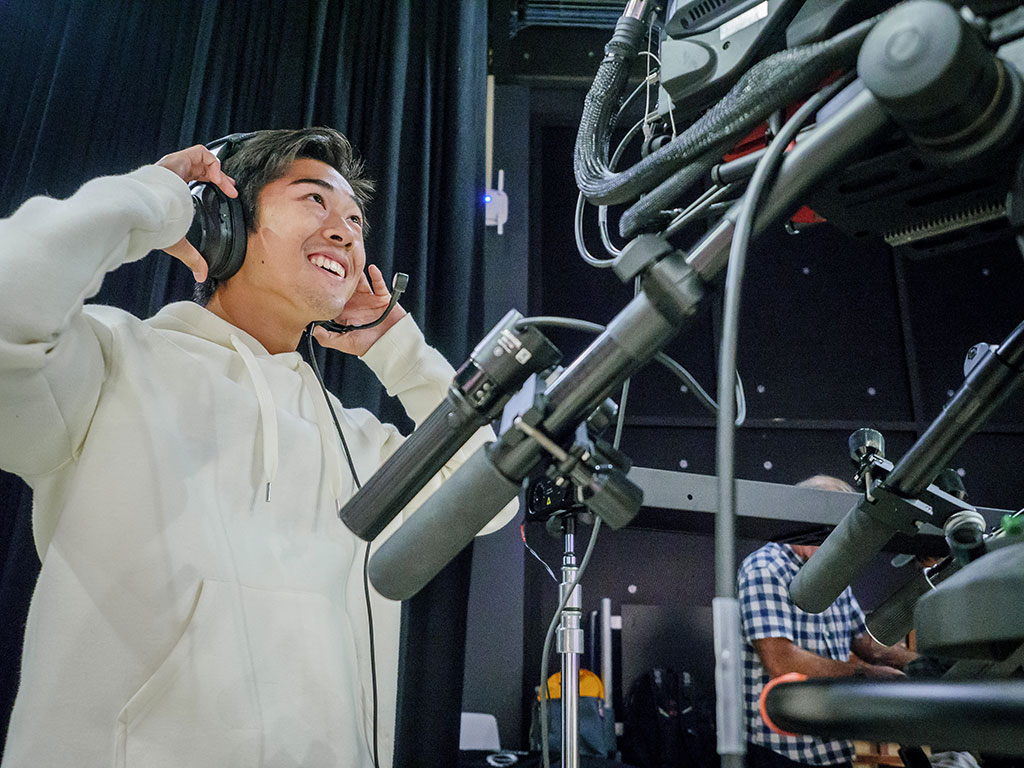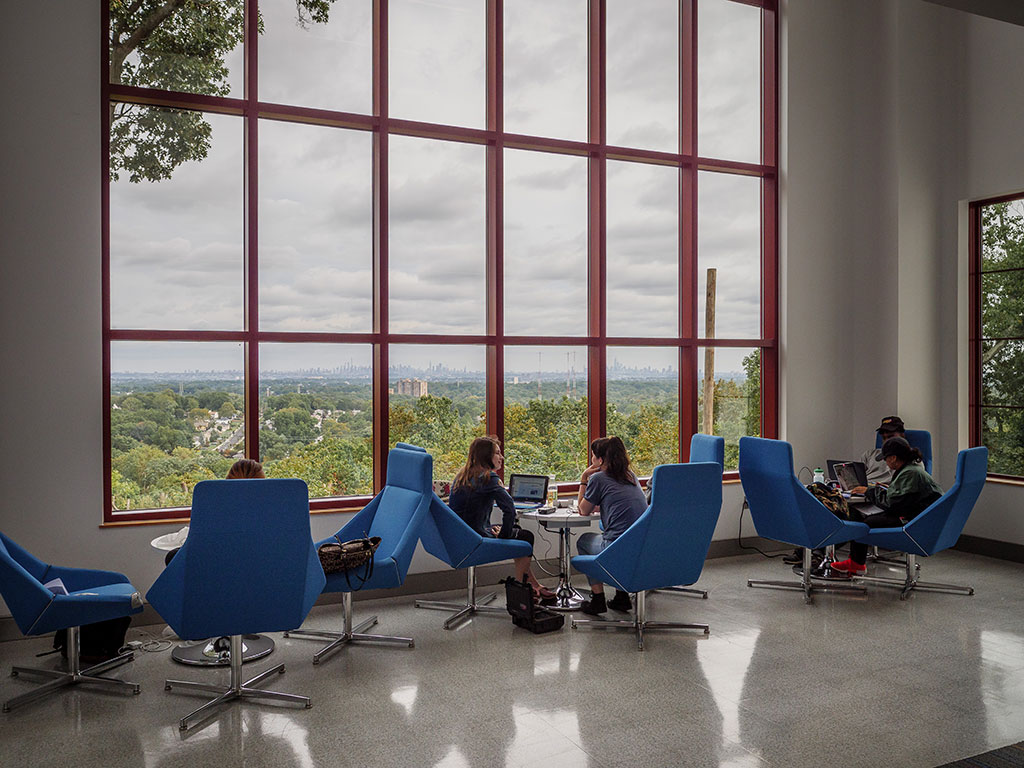
Hollywood East
School of Communication and Media’s new home is nation’s most technologically advanced university media production facility, rivaling professional studios
The new $55.8 million School of Communication and Media building opened this fall to much fanfare, a red carpet event and buzz befitting what industry leaders are calling the most technologically advanced media and production facility of any university in North America.
“It is, in fact, more advanced than many professional facilities,” President Susan A. Cole told an audience of alumni, University board members, state legislators, faculty, staff and students at the opening celebration for what is being dubbed “Hollywood East.”
The building is a “toolbox” designed to inspire student creativity and give students the competitive edge they need for career success, she said, affirming that the School’s new 105,000-square-foot, cutting-edge home also supports the University’s commitment to serving the state and the nation as a national- and state-designated research doctoral university.

A national leader
“The new facility lets the world know that Montclair State is committed to being at the forefront of the communication and media industries,” says School of Communication and Media Director Keith Strudler. “From the quality of our graduates to the work produced by faculty, staff and the visitors we host on campus, we will be known as one of the nation’s preeminent schools of this kind.”
“Our students will gain the competitive advantage of mastering technology that not only meets industry standards but that in many instances goes well beyond.”
In the five years since the School of Communication and Media offered its first courses in 2012, it has garnered national attention for preparing students for highly competitive and evolving industries. The new facility gives students and faculty, as well as area filmmakers and media professionals, access to the latest technologies and production capabilities used in Hollywood.
“Our students will gain the competitive advantage of mastering technology that not only meets industry standards but that in many instances goes well beyond,” says College of the Arts Dean Daniel Gurskis. “This dynamic working environment is the perfect complement to the School’s rigorous, transdisciplinary curriculum that allows students to pursue majors in communication, television and digital media, filmmaking, journalism, and public and organizational relations.”
Sony partnership
Building features – such as the first end-to-end 4K broadcast production studio and control room in higher education – are more advanced than those found at many television networks, thanks to a long-term alliance between the University and Sony Electronics designed to cover the new building as well as a range of future campus projects.
In his remarks at the ribbon cutting, Sony Professional Solutions Americas President Katsunori Yamanouchi stressed that Sony was proud to play a pivotal role in creating products and active-learning solutions that give students the experience and professional training they need to succeed.

“We’re well established with the Hollywood filmmaking community and we were looking to have a similar presence on the East Coast,” says Theresa Alesso, vice president of Sony’s Solution Services group. “This new building delivers the right combination of technology and collaboration needed for the future of education.”
Built for collaborations
High-tech features of the new multimedia facility, which links Morehead Hall with Life Hall, include a motion picture stage; an advanced audio suite featuring Foley stage for sound effects, performance stage and audio sound labs; a multimedia newsroom with 26 work stations and an anchor desk; and four broadcast-ready HD and 4K studios and control rooms. Other amenities include makeup and green rooms, as well as a set from Comedy Central.
“The new facility lets the world know that Montclair State is committed to being at the forefront of the communication and media industries.”
Powered by Sony Digital Camera Projection and 7.1 Surround Sound, both the 187-seat Presentation Hall and the 40-seat screening room deliver immersive viewing experiences. “The Presentation Hall is the best,” says Professor Roberta Friedman, director of the Film Forum. “I program Film Forum, our free films and filmmakers screening series. Films look and sound wonderful.”
Students also get real-world, hands-on training in a contemporary, broadcast-ready newsroom; interactive collaborative learning spaces; and high-tech multimedia labs. Inviting public spaces with sweeping views of New York City, informal learning spaces and glassed-in team rooms are configured to foster creative teamwork – the heart of any successful journalism, film, television or radio production. The building’s integrated design invites multimedia collaborations by bringing faculty, industry professionals, academic programs and students under one roof for the first time.

Welcome to Hollywood East
“Students, faculty and staff are all inspired and energized by this new building,” says Steve McCarthy, instructor and news producer for the School of Communication and Media. “It will attract students from all over the country.”
Students had been eagerly awaiting this semester so they could start using the facility and equipment. “The building’s new technologies and features are going to revolutionize the way students like myself are going to learn,” says senior Television and Digital Media major Avery Federico. “Learning on high-end equipment used in professional networks will give us a leg up in our job searches.”
Casey Owens hopes to produce late-night television shows after she graduates in May.

“My educational experience is enhanced because I’m working with broadcast equipment that’s actually used in the real world,” she says, noting that the switcher in one of the control rooms was used in the 2016 Rio Olympics. “It inspires me to believe that if I can learn how to use equipment like that now, I’ll have no problem with the equipment in a professional environment after graduation.”
Josue Dajes, the managing editor of The Montclarion, is excited to move into the student newspaper’s new second-floor offices, which offer panoramic floor-to-ceiling views of the New York City skyline. “The new facilities and technologies will make students more proficient and knowledgeable in their fields of study,” he says. “Yet it’s really up to us as students to take advantage of everything at hand to make our own futures.”
Rave reviews
Like Dajes, Journalism Professor Tara George, who is also The Montclarion faculty adviser and co-coordinator of the School’s Journalism and Television and Digital Media programs, is delighted to see the student-run news organization move from its former basement quarters into its new digs upstairs. “There’s state-of-the-art equipment that students can get their hands on, lovely open spaces for hanging out and great learning environments, including newsrooms for The Montclarion and for the radio station,” she says.
Professor David Sanders, who teaches the School’s audio and sound design courses, notes that, “After teaching audio practically out of a closet when I arrived 20 years ago, we finally have a world-class, fully professional audio recording facility. I’m really excited about the possibilities and level of professionalism it offers our students.”
For Patricia Piroh, associate director of Broadcast and Media Operations, it is especially gratifying to make the move to a building that is certain to be the home for “future generations of media professionals.”
Strudler sums up the building’s potential long-term impact this way: “Here we will create outstanding and thoughtful content that is limited only by our imaginations. With our media partners, we will make a vibrant hub of collaborative excellence. And we will foster a learning community that changes lives, our community and that will perhaps change the world for the better.”
